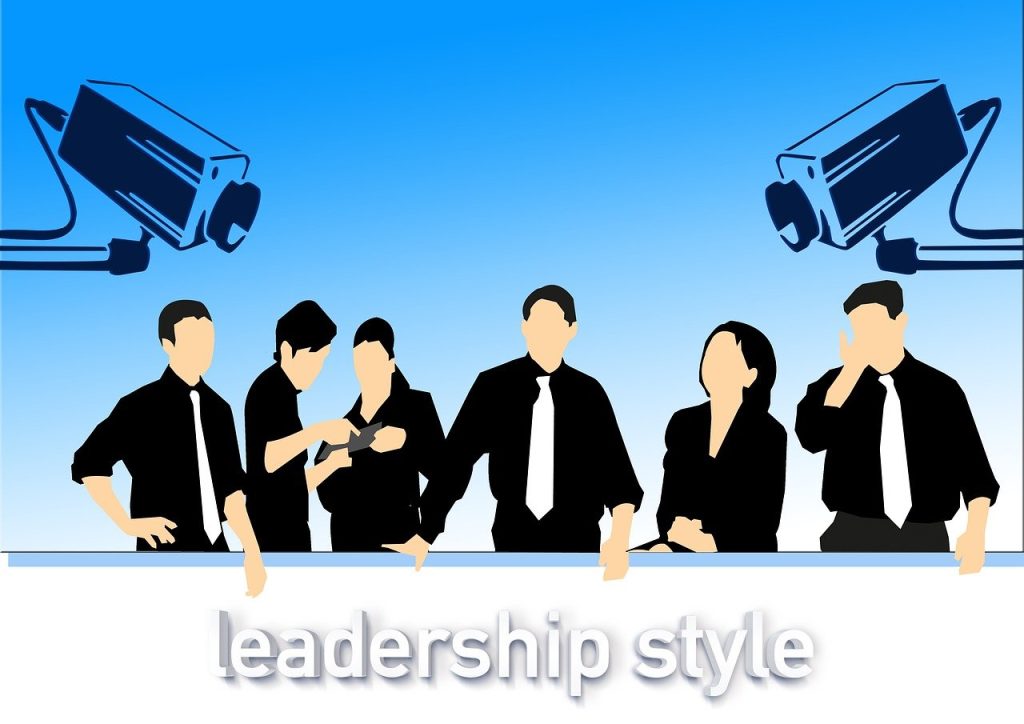In today’s hypercompetitive corporate world, companies like Google, Apple, Netflix, and Tesla operate in environments where change is the only constant. Fast-paced markets shaped by rapid technological advances, evolving consumer preferences, and global disruptions demand leadership styles that not only endure chaos but thrive in it. Leaders must cultivate agility, foster innovation, and empower their teams to make decisions in real time, often under immense pressure. This transformation in leadership philosophy moves away from traditional command-and-control models that slow down responsiveness. Instead, modern organizations opt for approaches that emphasize adaptability and employee engagement to sustain excellence at breakneck speed. From the Silicon Valley giants to emerging disruptors like Uber and Spotify, identifying and mastering the leadership styles that best align with fast-paced work environments is key to maintaining competitive advantage and organizational resilience.
Situational and Agile Leadership Models Driving Success in Rapidly Changing Workplaces
Situational leadership, a concept formulated by Paul Hersey and Ken Blanchard, remains exceptionally relevant for dynamic environments where fixed leadership styles falter. This model emphasizes adapting one’s approach based on the evolving competence and commitment levels of team members. For example, a project leader at Salesforce moving through phases of development must constantly recalibrate between directing new team members and delegating to experienced performers to optimize outcomes.
Agility in leadership means more than speed; it encapsulates resilience, flexibility, and openness to iterative feedback loops—qualities essential for navigating the technologies and markets that giants such as Facebook and Airbnb confront daily. Agile leaders empower their teams to experiment with new ideas, learn rapidly from failures, and pivot strategies swiftly. This leadership style nurtures a culture of continuous improvement and fosters an atmosphere where innovation thrives unchecked by cumbersome bureaucracy.
Let’s examine the core elements that make situational and agile leadership effective in high-velocity contexts:
- Adaptability: Leaders must assess each situation and adjust their level of directive or supportive behavior accordingly.
- Resilience: Rapid setbacks require mental toughness and the ability to recover quickly without losing momentum.
- Empowerment: Encouraging team autonomy accelerates problem-solving and boosts morale.
- Continuous learning: Both leaders and teams embrace ongoing skill development and process refinement.
- Open communication: Transparent dialogue enables rapid alignment and reduces misunderstandings during change.

For instance, Tesla’s leadership culture illustrates how situational awareness combined with agile practices allows the company to respond swiftly to regulatory changes and market demands. Tesla’s leaders tailor their strategies based on the differing needs of departments—from engineering breakthroughs to sales operations—adjusting leadership intensity and decision-making speed accordingly. This flexibility differentiates them from traditional automotive companies bound by more rigid hierarchical systems.
| Leadership Element | Benefit in Fast-Paced Workplaces | Example Organization |
|---|---|---|
| Adaptability | Enables leaders to respond to sudden changes efficiently | |
| Empowerment | Boosts innovation through autonomous decision-making | Spotify |
| Continuous Learning | Keeps skills current and processes optimized | Amazon |
| Open Communication | Aligns teams quickly during shifts in priorities |
Leaders interested in mastering these approaches may explore resources such as this comprehensive analysis to deepen their practical understanding. The ability to oscillate between leadership styles situationally, combined with fostering agile workplace cultures, particularly suits tech-centric and evolving industries.
Transformational and Servant Leadership Cultivating Engagement and Innovation Amid Rapid Change
In fast-moving sectors, transformational and servant leadership styles have become pillars of progressive organizational culture. At companies like Netflix and Airbnb, where creative disruption is standard, these styles stimulate innovation and heighten employee commitment amid constant change.
Transformational leaders articulate inspiring visions, challenge the status quo, and ignite passion within their teams. They prioritize employee development, encouraging experimentation and making space for creative problem-solving. This leadership mode is essential for industries disrupted by emerging technologies where employees are knowledge workers rather than routine laborers.
Conversely, servant leadership flips the traditional hierarchy, placing the leader’s role as one of support and facilitation. Servant leaders focus on the needs and well-being of their teams, building trust and fostering psychological safety. This approach has proven effective at companies like Salesforce, where empathy drives higher employee retention and engagement, which in turn fuels sustained innovative outputs.
Strong positive outcomes associated with these leadership styles include:
- Heightened motivation: Employees inspired by leaders believe in a shared purpose.
- Enhanced creativity: Freedom to innovate leads to breakthrough ideas and continuous improvement.
- Improved retention: Supportive environments reduce burnout and turnover.
- Robust team cohesion: Trust-based relationships speed collaboration and problem-solving.
- Adaptation to complexity: Transformational vision enables navigation through ambiguity.

Both leadership styles share the common thread of elevating followers beyond transactional exchanges to create transformative organizational impact. When Uber revamped its leadership training programs in 2024, it emphasized servant leadership principles to counteract rapid scaling challenges, resulting in better management practices and stronger cultural alignment.
| Leadership Style | Key Focus | Primary Outcome | Notable Company |
|---|---|---|---|
| Transformational | Inspiration, innovation, personal growth | Employee empowerment and sustained competitive advantage | Netflix |
| Servant | Empathy, well-being, support | High engagement, loyalty, and psychological safety | Salesforce |
Individuals seeking to adopt these styles can find valuable guidance in discussions such as those at LinkedIn’s modern leadership styles exploration, which emphasize emotional intelligence and authenticity alongside visionary leadership.
How Distributed Leadership Accelerates Team Responsiveness and Ownership in Fast-Moving Enterprises
Distributed leadership, also known as shared or collective leadership, has gained prominence in organizations striving for agility at scale. Companies like Spotify and Amazon implement structures that delegate leadership roles across their teams, allowing for faster, localized decision-making in a volatile environment.
At Spotify, autonomous squads operate semi-independently under a distributed leadership model. This delegation boosts innovation velocity and enables teams to pivot strategies aligned closely with customer feedback and market conditions. Amazon echoes this philosophy by empowering product managers and regional leaders with leadership authority, aligning decentralized command with overarching corporate strategies.
Key components that make distributed leadership effective include:
- Collaboration: Joint decision-making leverages diverse expertise across teams.
- Autonomy: Teams feel trusted to own outcomes, which drives responsibility and motivation.
- Accountability: Clear ownership reduces bottlenecks and accelerates execution.
- Innovation diffusion: Ideas propagate more swiftly when leadership is dispersed.
- Scalability: Organizations can expand without rigid centralized controls.
Interviewing a Spotify product owner during 2024 revealed how distributed leadership empowers frontline autonomy while maintaining alignment through lightweight governance systems. This stands in contrast to older paradigms where top-down mandates slowed innovation cycles and timely responses.

| Advantages of Distributed Leadership | Typical Challenges | Successful Application Example |
|---|---|---|
| Speedy decision-making | Needs strong communication channels to avoid misalignment | Spotify squads |
| Empowered employees | Requires culture of trust and accountability | Amazon leadership teams |
| Enhanced innovation | Balancing autonomy and strategic direction is complex | Salesforce regional management |
For those eager to adopt distributed leadership, examining case studies and practical frameworks on sites like NousTro’s leadership styles effectiveness can provide actionable insights.
Implementing Pacesetting Leadership for High-Stakes, Time-Sensitive Projects
Pacesetting leadership, characterized by leaders setting high-performance standards and leading by example, has found its niche in fast-paced industries where deadlines are tight and quality cannot be compromised. Organizations like Tesla and Netflix have successfully deployed pacesetting tactics during critical product launches or technology rollouts.
This style is especially effective in contexts where team members are highly skilled and self-motivated, able to match the energetic tempo set by the leader. Pacesetting leaders drive teams relentlessly to achieve rapid results while maintaining precision and top-tier quality.
- Instant execution: Rapid task completion with minimal oversight.
- High standards: Emphasis on excellence pushes continual improvement.
- Lead by example: Leaders visibly demonstrate the behaviors expected of their teams.
- Motivates seasoned professionals: Best suited for expert teams who thrive under pressure.
- Potential risks: Can lead to burnout if applied without balancing support and rest.
For instance, during Tesla’s push toward mass-market electric vehicle production, the CEO’s pacesetting leadership style galvanized teams to meet ambitious goals. Yet, the company also learned to temper this approach with servant leadership principles to mitigate employee exhaustion and turnover.
| Characteristic | Benefit | Potential Drawback | Company Example |
|---|---|---|---|
| High-performance focus | Accelerates project completion | Risk of employee burnout | Tesla |
| Leader as role model | Enhances team motivation | Pressure on leader to sustain pace | Netflix |
Interested leaders might explore detailed examples of pacesetting leadership in action at Leah Farmer’s Substack along with case studies available on Emeritus’s blog.
Developing the Essential Skills and Mindset for Leading in High-Speed Business Contexts
Leadership in fast-paced environments extends beyond selecting the right style; it demands the continual development of skills and mindsets tailored to evolving challenges. Lessons from industry leaders at Google and Amazon reveal an emphasis on self-awareness, emotional intelligence, and a growth mindset as fundamental competencies.
Key practices to cultivate successful leadership include:
- Continuous Learning: Staying abreast of emerging trends through workshops, thought leadership content, and peer networks.
- Emotional Intelligence: Developing empathy and active listening skills to intuitively support and motivate teams.
- Agility in Problem-Solving: Embracing uncertainty and adapting quickly when obstacles arise.
- Empowerment: Encouraging team autonomy and decision-making, with appropriate support without micromanagement.
- Growth Mindset: Viewing challenges as opportunities and fostering a culture of innovation and resilience.
For example, Spotify’s leadership development programs heavily invest in emotional intelligence training, recognizing its role in managing diverse, remote, and cross-functional teams effectively. Likewise, Airbnb’s executive team champions vulnerability and authenticity as pathways to deeper trust, which correlates with improved engagement and retention metrics.
Leaders keen on improving their competencies should also explore detailed frameworks and insights available via platforms like Culture Monkey and TheProjectMgr, which specialize in leadership dynamics within fast-moving project teams.
Frequently Asked Questions About Effective Leadership Styles in Fast-Paced Workplaces
How can a leader maintain team morale during rapid organizational changes?
Maintaining open communication and fostering psychological safety are crucial. Leaders should provide clear visions, acknowledge challenges openly, and support their teams emotionally to sustain morale through change.
Which leadership style best supports innovation in fast-paced tech companies?
Transformational and agile leadership styles are particularly suited as they promote creativity, experimentation, and quick responsiveness essential for innovation at companies like Google and Tesla.
What challenges does distributed leadership face in large organizations?
While it accelerates decision-making, distributed leadership requires robust communication infrastructures and strong cultural norms around trust and accountability to prevent misalignment.
How does pacesetting leadership affect employee well-being?
Although it can drive exceptional performance, pacesetting leadership risks burnout if leaders do not balance high expectations with adequate support and rest periods.
Can leaders blend multiple leadership styles effectively in a fast-paced environment?
Yes, the most effective leaders adapt their style situationally, combining elements from transformational, servant, agile, and pacesetting leadership depending on the context and team needs.


